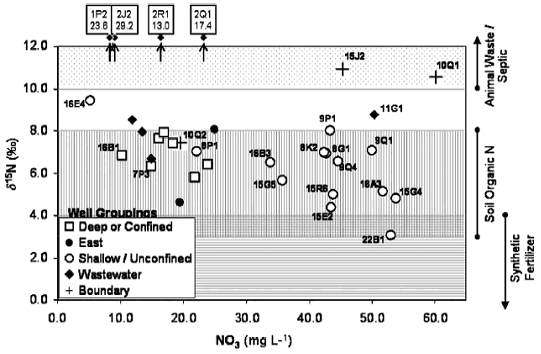
Fig. 6. Nitrate concentrations and δ15N values in groundwater. Expected δ15N ranges for various sources are identified. Several samples from the wastewater region had δ15N values off the scale of the chart, as indicated. Regions represented by well symbols are defined in Fig. 2.
〔Moore,K.B., Ekwurzel,B., Esser,B.K., Hudson,G.B. and Moran,J.E.(2006): Sources of groundwater nitrate revealed using residence time and isotope methods. Applied Geochemistry, 21, 1016-1029.から〕